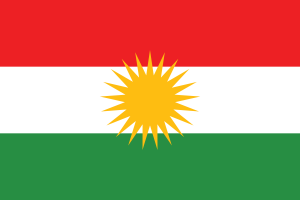Difference between revisions of "Language/Northern-kurdish/Grammar/Subordinating-Conjunctions"
m (Quick edit) |
m (Quick edit) |
||
| Line 1: | Line 1: | ||
<span pgnav> | |||
{| class="wikitable pg_template_nav" | |||
|[[Language/Northern-kurdish/Grammar/Coordinating-Conjunctions|◀️ Coordinating Conjunctions — Previous Lesson]] | |||
|} | |||
</span> | |||
{{Northern-kurdish-Page-Top}} | {{Northern-kurdish-Page-Top}} | ||
| Line 108: | Line 114: | ||
{{Northern-kurdish-Page-Bottom}} | {{Northern-kurdish-Page-Bottom}} | ||
<span links></span> | <span links></span> | ||
<span pgnav> | |||
{| class="wikitable pg_template_nav" | |||
|[[Language/Northern-kurdish/Grammar/Coordinating-Conjunctions|◀️ Coordinating Conjunctions — Previous Lesson]] | |||
|} | |||
</span> | |||
Revision as of 18:36, 29 March 2023
| ◀️ Coordinating Conjunctions — Previous Lesson |
As a Northern Kurdish language teacher with 20 years of experience, my aim is to provide a comprehensive guide to learning Northern Kurdish. In this lesson, we will cover subordinating conjunctions, which are essential for constructing complex sentences in Northern Kurdish.
After mastering this lesson, these related pages might interest you: Alphabet and Pronunciation & Personal Pronouns.
What Are Subordinating Conjunctions?
A subordinating conjunction is a word that connects a dependent clause to an independent clause in a complex sentence. A dependent clause does not express a complete thought and requires the support of an independent clause to form a meaningful sentence. Subordinating conjunctions can indicate time, cause, condition, contrast, or concession.
In Northern Kurdish, subordinating conjunctions can be divided into four main categories: time, cause, condition, and other subordinating conjunctions.
Time Subordinating Conjunctions
Time subordinating conjunctions are used to express a temporal relationship between the dependent and independent clauses. Here are some examples:
| Northern Kurdish | Pronunciation | English |
|---|---|---|
| ژمارە | [ʒmɑːɾɛ] | when |
| کاتێک | [kɑːtɛːk] | when |
| دوای ئەو بەشە | [dɑwɑːi æw bɛʃɛ] | after that |
| پێش ئەو بەشە | [pɛːʃ æw bɛʃɛ] | before that |
Cause Subordinating Conjunctions
Cause subordinating conjunctions are used to express a causal relationship between the dependent and independent clauses. Here are some examples:
| Northern Kurdish | Pronunciation | English |
|---|---|---|
| ڕەگەز | [ɾɛːgɛz] | because |
| پاشان | [pɑːʃɑn] | since |
| گونجاوی | [ɡunjɑːwiː] | due to |
Condition Subordinating Conjunctions
Condition subordinating conjunctions are used to express a conditional relationship between the dependent and independent clauses. Here are some examples:
| Northern Kurdish | Pronunciation | English |
|---|---|---|
| گەر | [ɡɛːɾ] | if |
| چەندین | [tʃɛndiːn] | if |
| ئەگەر | [æɡɛːɾ] | if |
Other Subordinating Conjunctions
Other subordinating conjunctions are used to express various relationships between the dependent and independent clauses. Here are some examples:
| Northern Kurdish | Pronunciation | English |
|---|---|---|
| کەوت | [kɛwæt] | although |
| لەگەڵ ئەوەی | [lɛɡɛl æweː] | in spite of |
| کەو | [kɛw] | as |
| لەوانەی کە | [lɛwænæji kɛ] | that |
Conclusion
Subordinating conjunctions are an essential tool for constructing complex sentences in Northern Kurdish. By understanding their usage, you will be able to express various relationships and create more nuanced sentences. I hope this lesson has been useful and informative for you, and I look forward to helping you learn more about this fascinating language in the future.
Great work on completing this lesson! Take a moment to investigate these connected pages: Negation & Pronouns.
Other Lessons
- Time Adverbs
- Conditional Mood
- 0 to A1 Course
- Dative Case
- Basic Word Order
- Pronouns
- Gender
- Present Tense
- Negation
- Nominative Case
Template:Northern-kurdish-Page-Bottom
| ◀️ Coordinating Conjunctions — Previous Lesson |
